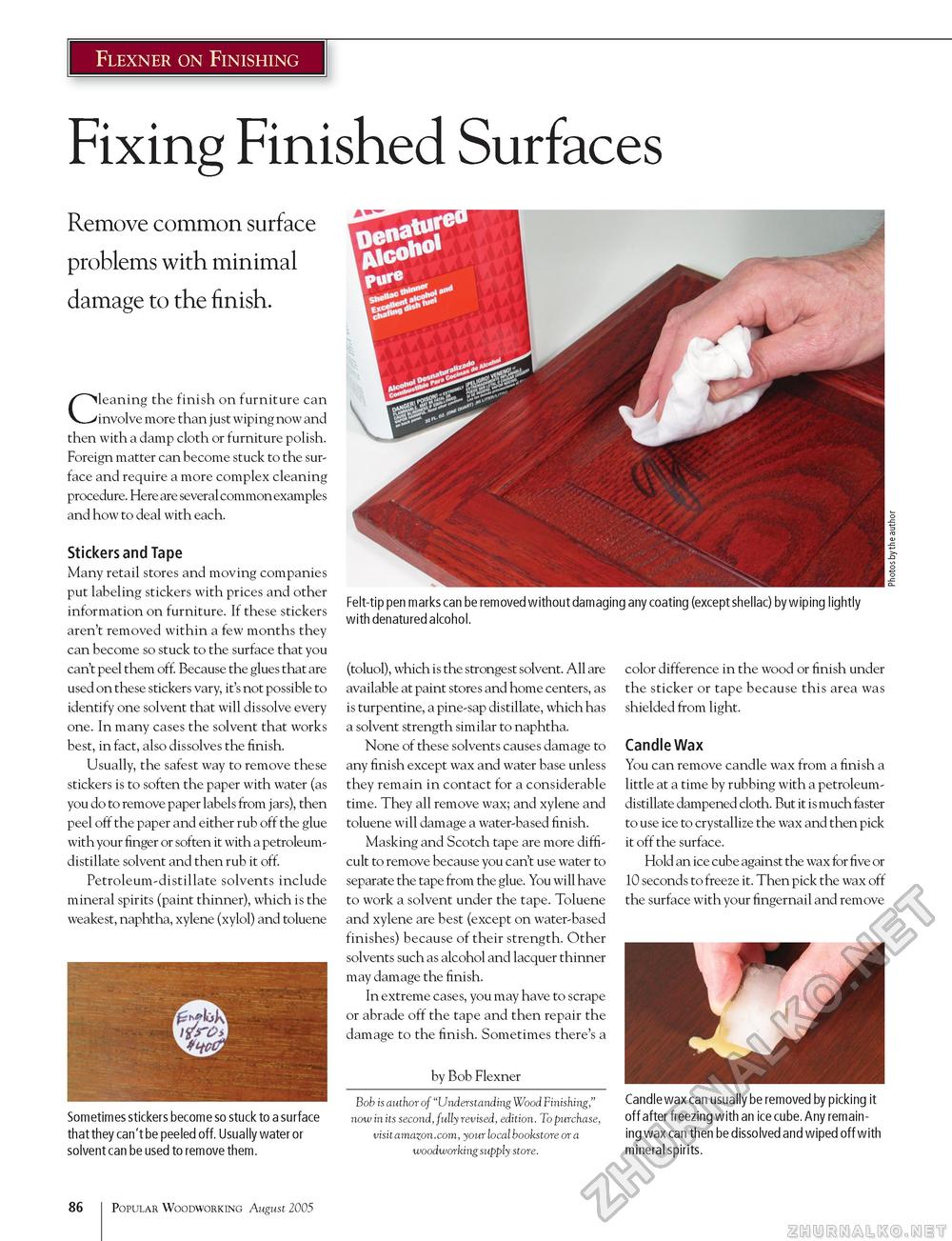Popular Woodworking 2005-08 № 149, страница 88
Flexner on Finishing Fixing Finished SurfacesRemove common surface problems with minimal damage to the finish. Cleaning the finish on furniture can involve more than just wiping now and then with a damp cloth or furniture polish. Foreign matter can become stuck to the surface and require a more complex cleaning procedure. Here are several common examples and how to deal with each. Stickers and Tape Many retail stores and moving companies put labeling stickers with prices and other information on furniture. If these stickers aren't removed within a few months they can become so stuck to the surface that you can't peel them off. Because the glues that are used on these stickers vary, it's not possible to identify one solvent that will dissolve every one. In many cases the solvent that works best, in fact, also dissolves the finish. Usually, the safest way to remove these stickers is to soften the paper with water (as you do to remove paper labels from jars), then peel off the paper and either rub off the glue with your finger or soften it with a petroleum-distillate solvent and then rub it off. Petroleum-distillate solvents include mineral spirits (paint thinner), which is the weakest, naphtha, xylene (xylol) and toluene Felt-tip pen marks can be removed without damaging any coating (except shellac) by wiping lightly with denatured alcohol. Sometimes stickers become so stuck to a surface that they can't be peeled off. Usually water or solvent can be used to remove them. (toluol), which is the strongest solvent. All are available at paint stores and home centers, as is turpentine, a pine-sap distillate, which has a solvent strength similar to naphtha. None of these solvents causes damage to any finish except wax and water base unless they remain in contact for a considerable time. They all remove wax; and xylene and toluene will damage a water-based finish. Masking and Scotch tape are more difficult to remove because you can't use water to separate the tape from the glue. You will have to work a solvent under the tape. Toluene and xylene are best (except on water-based finishes) because of their strength. Other solvents such as alcohol and lacquer thinner may damage the finish. In extreme cases, you may have to scrape or abrade off the tape and then repair the damage to the finish. Sometimes there's a by Bob Flexner Bob is author of "Understanding Wood Finishing," now in its second, fully revised, edition. To purchase, visit amazon.com, your local bookstore or a woodworking supply store. color difference in the wood or finish under the sticker or tape because this area was shielded from light. Candle Wax You can remove candle wax from a finish a little at a time by rubbing with a petroleum-distillate dampened cloth. But it is much faster to use ice to crystallize the wax and then pick it off the surface. Hold an ice cube against the wax for five or 10 seconds to freeze it. Then pick the wax off the surface with your fingernail and remove Candle wax can usually be removed by picking it off after freezing with an ice cube. Any remaining wax can then be dissolved and wiped off with mineral spirits. 86 Popular Woodworking August 2005 |








